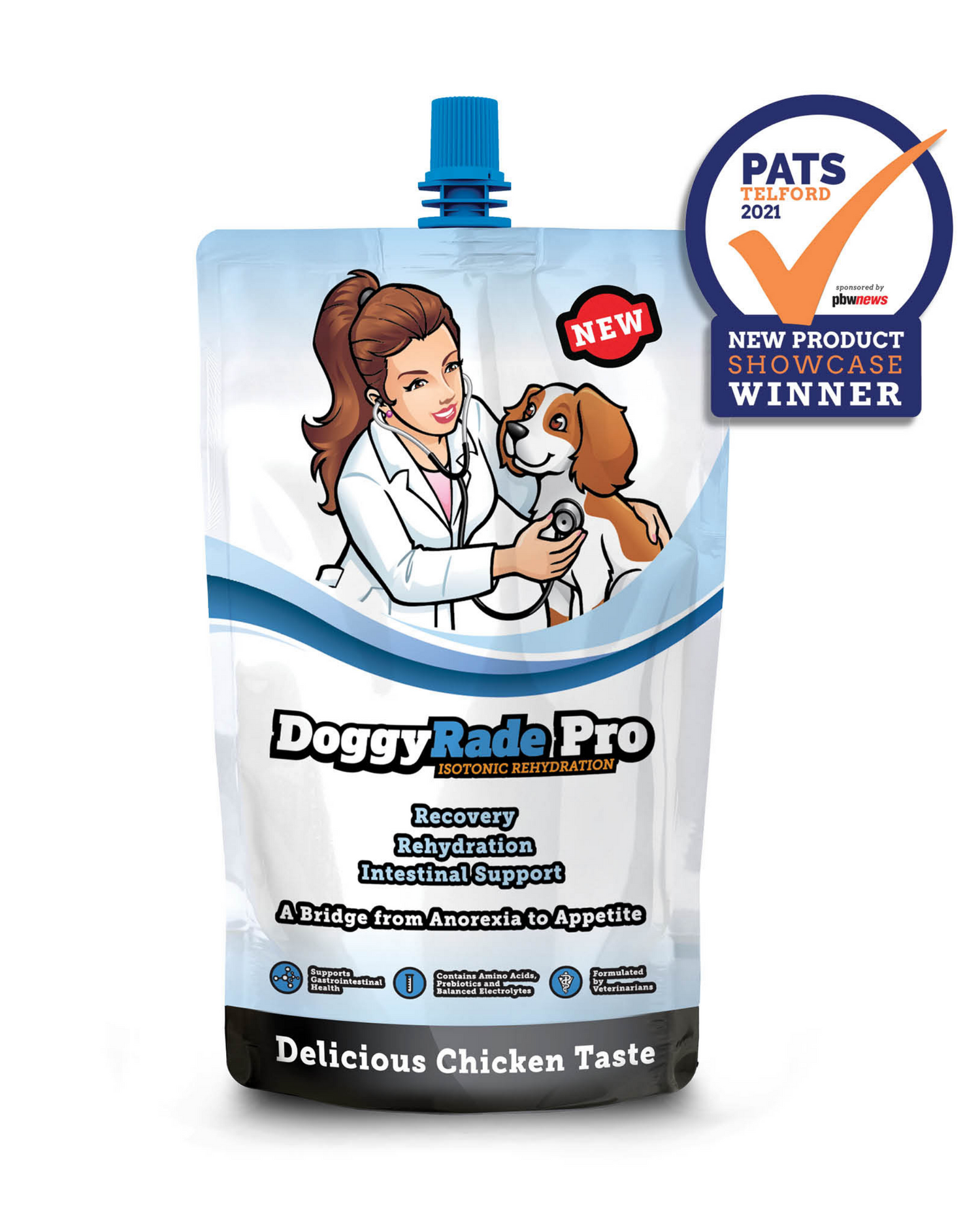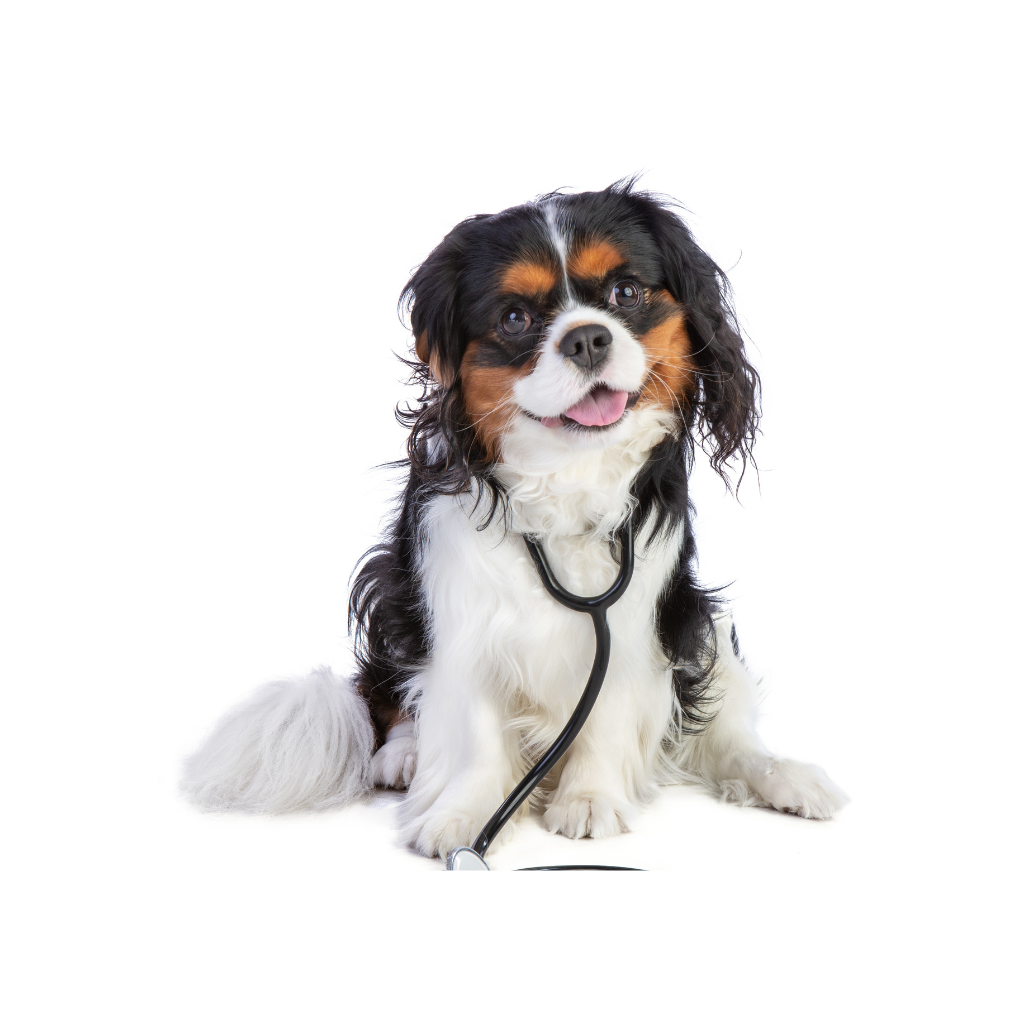DoggyRade Pro User Guide

✔️What is DoggyRade Pro and what is it used For?
DoggyRade Pro is an award-winning isotonic solution that contains water purified by reverse osmosis, amino acids, electrolytes, dextrose and prebiotics. It is also highly palatable to dogs. DoggyRade Pro is specially formulated to maintain the health of enterocytes with the goal of helping to maintain gut integrity and the mucosal barrier. DoggyRade Pro is used to provide early nutritional support to dogs.
What are the benefits of early enteral nutrition? (Why should I feed my patient now?)
Anorexia is common in sick or seriously injured patients. Anorexia rapidly leads to gastrointestinal (GI) mucosal atrophy, decreased GI motility, pancreatic atrophy and cholestasis. Early nutrition helps maintain normal GI function thus helping to decrease patient morbidity.
Even small volumes of enterally-delivered nutrients have been shown to:
- Help maintain GI mucosal blood flow
- Help decrease the incidence of stress ulcers
- Help maintain the integrity of the intestinal barrier thus decreasing the likelihood of bacterial translocation
- Enteral nutrients are also essential for secretory IgA which is a key component of the gut mucosal defence system
Many patients cannot tolerate the caloric density and fat content of standard nutrition products in the early phases of their illness, but DoggyRade Pro provides an alternative strategy.

✔️Patient selection and support
Every sick or injured animal will benefit from early nutrition. This is especially important in severe trauma, immediately postoperative following gastrointestinal surgery, parvovirus enteritis and in any patient that has been anorectic for longer than 24 hours at the time of examination. Other than patients that have a major surgical condition there is no patient whose GI tract benefits from “‘nothing by mouth”.
Key point: If it is anticipated that the patient will not voluntarily eat within 12 hours an attempt should be made to start DoggyRade Pro within 6 hours.
Collapsible content
How does DoggyRade Pro help?
How does DoggyRade Pro help?
How to administer DoggyRade Pro?
How to administer DoggyRade Pro?

✔️What are the ingredients in DoggyRade Pro?
DoggyRade Pro is composed of electrolytes, glutamic acid, fructooligosaccharides, glycine and dextrose.
What are the benefits of glutamic acid?
Glutamine is an amino acid derived from glutamic acid. Glutamine is the preferred energy substrate for the enterocyte and as such it plays a key role in maintaining the integrity of the gut barrier. It is also the preferred fuel source for other rapidly dividing cells such as lymphocytes and fibroblasts especially during times of critical illness.
What are the benefits of fructooligosaccharides (FOS)?
FOS are prebiotics and naturally-occurring substances that provide beneficial effects on digestion through their activity in the large intestine. FOS are fermented in the colon to product short chain fatty acids, which have important anti-inflammatory effects. FOS help to increase the concentrations of beneficial bacteria such as Bifidobacterium spp. and Lactobacillus spp and may decrease concentrations of harmful bacteria such as Clostridium perfringens.
What are the benefits of glycine?
Glycine has been shown to improve intestinal mucosal morphology and hasten the resolution of diarrhea. Glycine also enhances the update of glucose from the gut.
What are the benefits of glucose?
Glucose enhances sodium and water absorption through a cotransporter mechanism, even in the face of active secretion due to infection. Glucose in the gut also enhances mucosal blood flow.
What are the benefits of the electrolytes?
DoggyRade Pro contains a maintenance level of sodium and potassium – equivalent to what the body normally loses daily through urine and faeces.
✔️Storage
Store unopened product in a cool dry place (5-20 °C, 40 – 75 °F) out of direct sunlight. Once opened, refrigerate remaining product, and use within 3 days.




